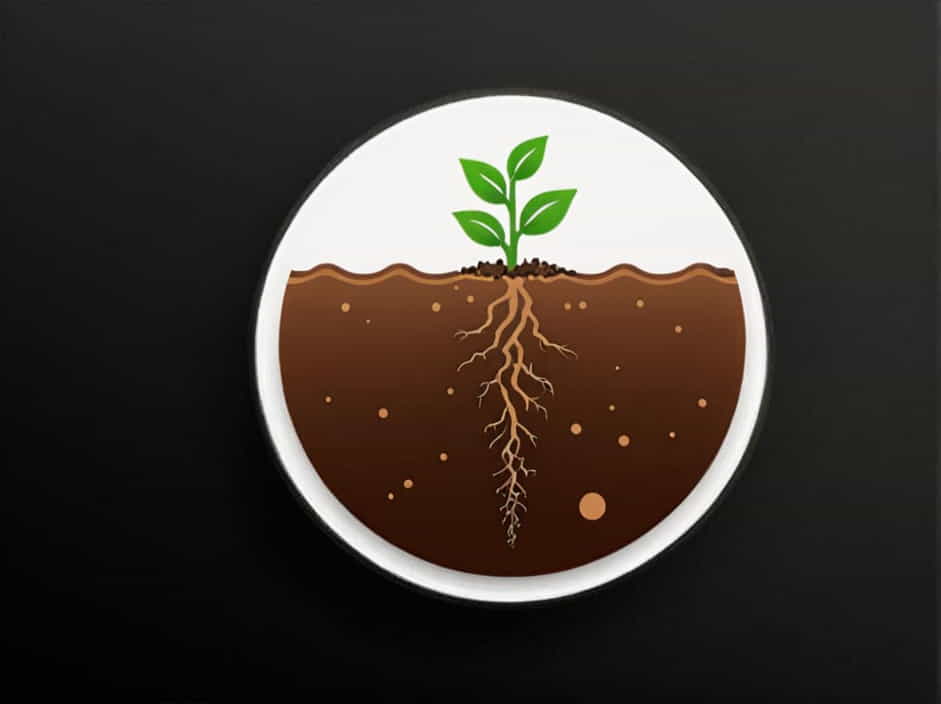Soil is a vital natural resource that supports plant growth, stores water, and provides habitat for numerous organisms. It consists of different layers, known as soil horizons, each with unique characteristics. One of the most important horizons is the subsoil, scientifically called the B horizon.
The subsoil plays a crucial role in soil structure, water retention, and nutrient storage. Understanding its properties helps in agriculture, construction, and environmental conservation. This topic explores the definition, composition, functions, and significance of the subsoil in soil ecosystems.
What Is the Subsoil (B Horizon)?
Definition of Subsoil
The subsoil, or B horizon, is the soil layer located beneath the topsoil (A horizon) and above the parent material (C horizon). It is primarily composed of minerals, clay, and leached nutrients, with little organic matter compared to the topsoil.
Characteristics of the Subsoil
- Rich in Minerals
- The subsoil contains iron, aluminum, calcium, and other minerals that leach from the topsoil.
- Dense and Compact
- Due to its high clay content, the subsoil is more compact and less porous than the topsoil.
- Low Organic Matter
- Unlike the topsoil, the subsoil has less humus and fewer microorganisms.
- Retains More Water
- Its clay and mineral content allows it to hold water longer than the topsoil.
Soil Horizons: Understanding the Soil Layers
Soil is made up of distinct layers, each serving a different function. These layers, called soil horizons, include:
1. O Horizon (Organic Layer)
- Composed of decomposed leaves, plant material, and organic matter.
- Found mostly in forested and grassland areas.
2. A Horizon (Topsoil)
- Also called topsoil, it is the most fertile layer.
- Contains humus, nutrients, and microorganisms.
- Essential for plant growth and agriculture.
3. B Horizon (Subsoil)
- Located beneath the topsoil, it is the subsoil layer.
- Contains leached minerals, clay, and little organic matter.
- Less fertile but supports deep-rooted plants.
4. C Horizon (Parent Material)
- Composed of partially broken-down rocks.
- Serves as the foundation for soil formation.
5. R Horizon (Bedrock)
- The deepest soil layer, consisting of solid rock.
- Over time, weathering breaks it down to form new soil.
Composition of the Subsoil (B Horizon)
The B horizon consists of:
- Clay – Helps retain moisture but may limit root penetration.
- Leached Minerals – Includes calcium, magnesium, iron, and aluminum.
- Silicates – Play a role in soil structure and stability.
- Oxides – Give the subsoil its reddish or yellowish color.
- Limited Organic Matter – Contains only a small amount of decomposed plant material.
Functions and Importance of Subsoil
1. Supports Plant Growth
- Though not as fertile as topsoil, subsoil provides stability, moisture, and minerals for plants.
- Trees and deep-rooted crops rely on subsoil nutrients.
2. Water Retention and Drainage
- Subsoil absorbs and holds water longer than topsoil.
- Acts as a natural reservoir for plants during dry periods.
3. Mineral Storage
- Contains important minerals needed for plant growth.
- Minerals from the topsoil accumulate in the subsoil.
4. Foundation for Construction
- The compact nature of subsoil makes it important for building roads, houses, and infrastructure.
Differences Between Topsoil and Subsoil
| Feature | Topsoil (A Horizon) | Subsoil (B Horizon) |
|---|---|---|
| Location | Uppermost layer | Beneath topsoil |
| Organic Matter | High | Low |
| Nutrient Availability | Rich in humus and nutrients | Contains leached minerals |
| Texture | Loose and porous | Denser and compact |
| Water Retention | Drains well | Holds more water |
| Plant Growth Support | Ideal for crops | Supports deep roots |
How Subsoil Affects Agriculture
The properties of subsoil influence soil fertility, water management, and plant growth. Here’s how it affects agriculture:
1. Fertility and Crop Growth
- Subsoil is less fertile than topsoil.
- Deep-rooted crops like grapes, wheat, and trees can still absorb its minerals.
2. Drainage and Irrigation
- Clay-heavy subsoil can lead to waterlogging.
- Sandy subsoil drains too quickly, requiring more irrigation.
3. Soil Management Strategies
- Deep tilling and plowing improve root access to nutrients.
- Adding organic matter enhances soil structure and fertility.
Improving Subsoil Quality for Farming
Farmers use several techniques to enhance subsoil properties:
1. Adding Organic Matter
- Compost and manure improve nutrient availability.
2. Using Cover Crops
- Plants like clover and alfalfa break up compact soil and add nutrients.
3. Soil Aeration
- Plowing and deep tilling loosen compacted subsoil.
4. Adjusting Soil pH
- Lime is added to reduce soil acidity, making nutrients more accessible.
Subsoil and Environmental Impact
Subsoil plays an important role in soil conservation and ecosystem health.
1. Prevents Soil Erosion
- Subsoil anchors topsoil, reducing erosion from wind and water.
2. Stores Groundwater
- Acts as a natural filter that cleans water as it moves through soil layers.
3. Supports Carbon Storage
- Some subsoils store carbon, helping reduce greenhouse gases.
The B horizon, commonly known as subsoil, is a crucial part of the soil structure. It serves as a mineral reservoir, supports plant roots, retains water, and stabilizes the soil. While it lacks the fertility of topsoil, its role in agriculture, construction, and environmental sustainability is undeniable.
Understanding subsoil properties helps farmers, engineers, and conservationists make better decisions to improve soil health, prevent erosion, and enhance sustainable land use.
